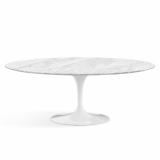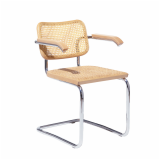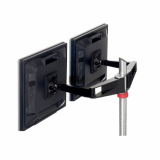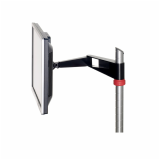At Home with Richard Sapper
A photographic visit with Ramak Fazel
Richard Sapper has designed everything from tea kettles to television sets, cheese graters to computers. With backgrounds in philosophy, anatomy and engineering, Sapper ultimately graduated with a business degree from the University of Munich in 1956. His design career began in the styling department of Mercedes-Benz, before he relocated to Milan to work for the architect Gio Ponti. Over the course of his six-decade-long career, Sapper has collaborated with nearly every notable design company, including Alessi, Artemide, B&B Italia, Fiat, IBM and Knoll—he even turned down an offer from Steve Jobs to work for Apple, a decision he says he now regrets. Not surprisingly, he has created hundreds of objects, fifteen of which are housed in the permanent collection of The Museum of Modern Art in New York.
Sapper invited the photographer Ramak Fazel to tour his home in Milan, where the designer is based. At his desk, Sapper sits in an ergonomic chair of his own design: the Sapper™ Management Chair, first released in 1979. A decade after its release, the chair found its way into the offices of high-powered executives, becoming something of a status symbol in the process. A 1989 New York Times’ article was keen to note: “Another chair much in evidence in top-executive lairs is Knoll's Sapper™ Management Chair. The distinctive rosette trim on the Toscana leather upholstery of the sleek Sapper™ Executive Chair defuses the otherwise machine-like character of ergonomic design.” For Sapper, however, the chair's true virtue is not its style, but its staying power.
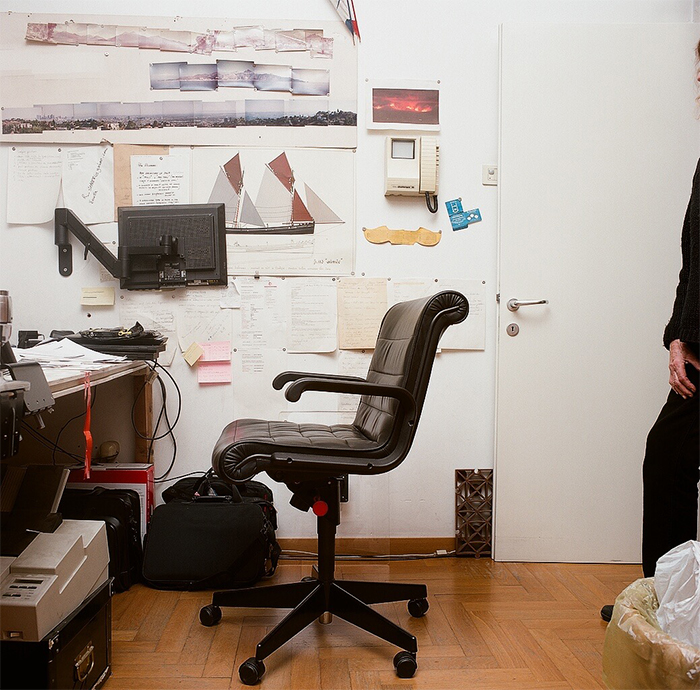
Sapper™ Management Chair at the designer's desk. Photograph by Ramak Fazel.
Sapper's work takes him all over the world—from Milan, to Berlin and New York—but he often finds himself tinkering on projects at home. Tools of the trade hang from the wall near the drafting table. Throughout the house, artifacts from Sapper's prolific design career are scattered about: a Static Table Clock designed for Lorenz; a tuned-whistling kettle for Alessi; the coveted TS 502 radio he created with Marco Zanuso; the Tizio floor and desk lamp; and the Tosca, Nena and Lamda chairs he created for Magis, B&B Italia and Gavina, respectively—testament to Sapper’s unique vision.
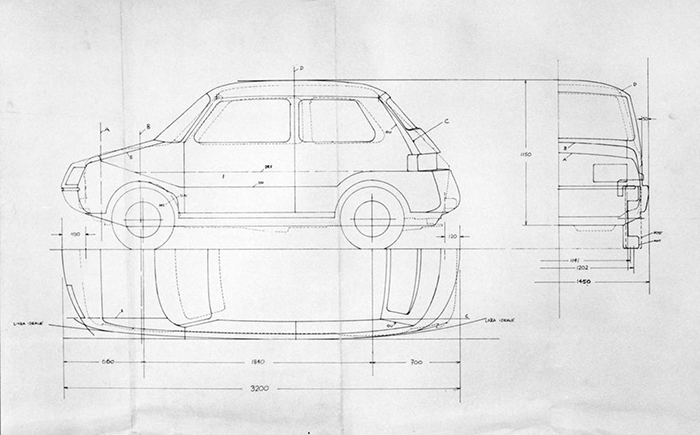
Production-ready draft of the X-126 "Softnose" prototype designed by Richard Sapper. Photograph courtesy of Richard Sapper.
Sapper’s own relationship with Knoll began in 1979, when Sapper was working as a design consultant for a number of companies, including Fiat and Knoll. While simultaneously developing a concept car and management/executive chair for the two companies, the projects came to a head. On the car prototype, Sapper substituted plastic bumpers for the metal ones Fiat had been using. While the car project was eventually scrapped, Fiat decided to retrofit all of their vehicles with plastic bumpers, putting the company’s metal factory in Turin out of business. Sapper, who felt guilty for his involvement in the company’s bankruptcy, decided to adapt the metal bumper to make the frame of the office chair, thereby saving the business. The chair’s final form is indeed reminiscent of a car seat, with its contoured shape, leather upholstery and molded armrests.
However, Sapper's stated intent with the design was to address the omnipresence of ‘imposed’ seating, which forces the sitter into a defined posture and position. With the Sapper™ Management Chair, Sapper conceived of a chair “designed and based on the ergonomic principles of ‘free’ seating, [more] generously proportioned with wide, flat seating and supporting surfaces than molded or rigid contours.” The splash of red seen on the height-adjustment lever is a detail that’s reprised in many of Sapper’s designs, used only to signify a differentiated function.
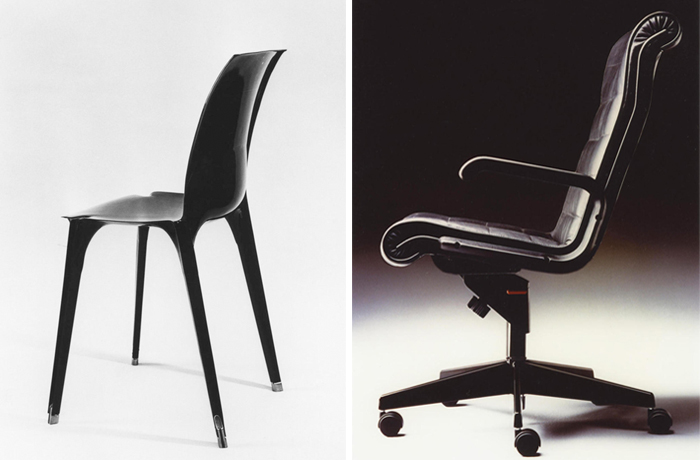
Left: Lamda Chair, 1959 designed by Richard Sapper and Marco Zanuso. Photograph courtesy of Richard Sapper.
Right:Sapper™ Management Chair, 1979 designed by Richard Sapper. Photograph from the Knoll Archives.
Knoll called on Sapper again in 2007, after Knoll’s marketing division asked Director of Design Benjamin Pardo to develop a series of configurable monitor arms. Pardo immediately thought of Sapper. “Here was an opportunity to work on a kinetic object with a guy who does that absolutely wonderfully,” Pardo said of the creative collaboration.
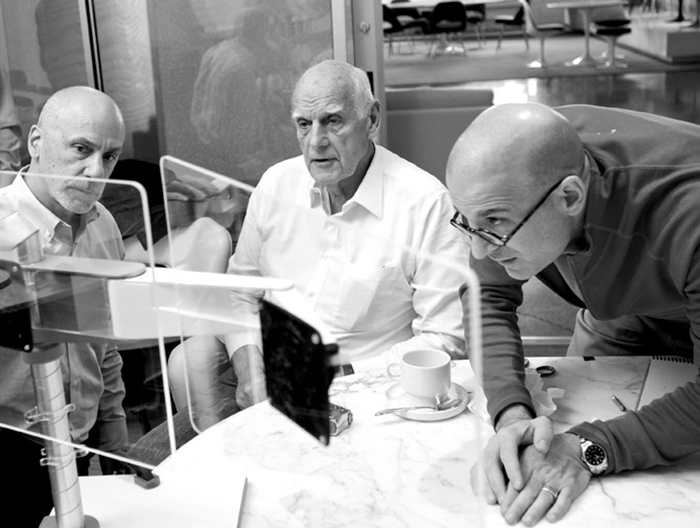
“We decided very early on that we didn’t want to make a system that hides the cables, but a system that matches the cables. You see them—they complement the design, like a plant in the jungle.”
—Richard Sapper
Left to right: Ron Synder, Richard Sapper and Benjamin Pardo working on the Sapper™ Monitor Arm. Photograph by Knoll.
The Sapper™ Monitor Arm builds off the mechanics first employed in his Tizio lamp, designed for Artemide in 1971. With two counterweights and conductive arms, the lamp was an enormous commercial success—due in large part to its ability to swivel into innumerable configurations, making it equal parts tool and toy.
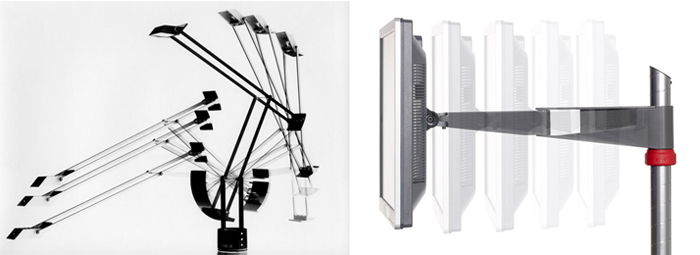
Left: Tizio Table Lamp, 1971 designed by Richard Sapper. Photograph courtesy of Richard Sapper.
Right: Sapper™ Monitor Arm, 2007 designed by Richard Sapper. Photograph by Knoll.
Many of these stylistic and technical details carry over to the Sapper™ Monitor Arm. As with the Tizio lamp's joints, red is used to indicate the arm's differentiated function: height-adjustability. Sapper, himself, uses the Sapper™ Monitor Arm at his home. It remains permanently clamped to the corner of his otherwise messy desk, overflowing with pencils, papers, photos and projects. “They're very complex technically,” Sapper says of the Sapper™ Monitor Arm, whose elegance belies its intricate inner workings.
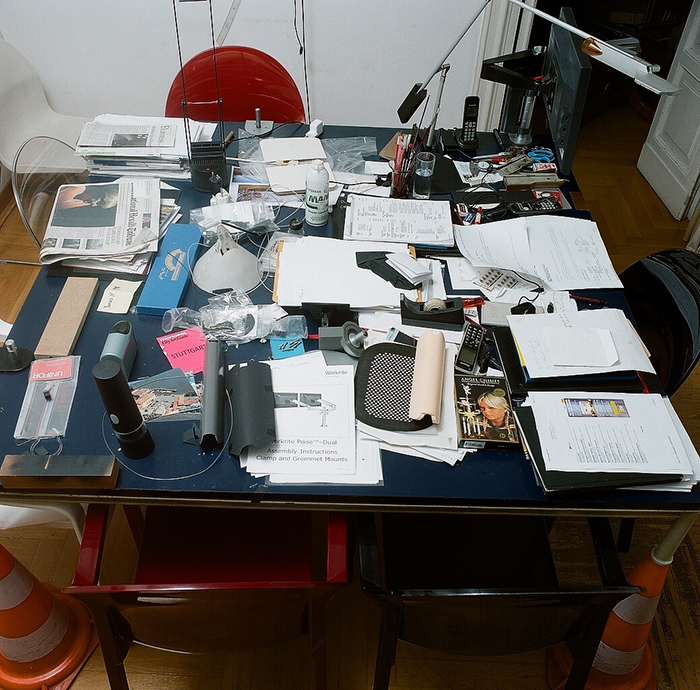
Sapper™ Monitor Arm as seen on the corner of the designer's desk in Milan. Photograph by Ramak Fazel.
When asked, Sapper has his own way of talking about his designs that draws on a humble vocabulary, peppered with artful similes. Demonstrating the monitor’s height-adjustability, Sapper says, “by screwing [this component] up and down the spiral, it climbs the stairs.” Similarly, rather than hide the monitor’s cables, Sapper explains his decision to embrace them, citing vines around a branch: “We decided very early on that we didn’t want to make a system that hides the cables, but a system that matches the cables. You see them—they complement the design, like a plant in the jungle.”
All photographs are courtesy of Ramak Fazel or Richard Sapper unless otherwise noted.







